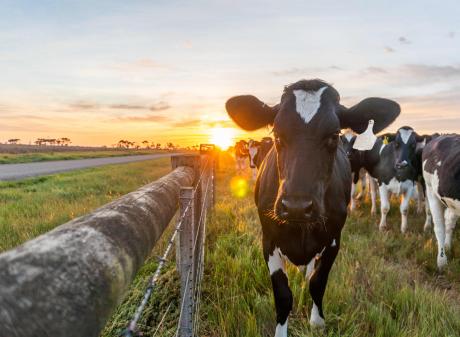
A stock number survey by Beef + Lamb New Zealand (B+LNZ) shows the impact of farmland being converted to forestry remains low at this stage, but this is likely to be short-lived.
Sheep numbers were slightly down at 25.78 million, compared with 25.73 million last year, while beef cattle numbers eased by 0.9%, to an estimated 3.93 million.
There were exceptions with sheep numbers rising 5.7% to 5.81 million in the greater Marlborough-Canterbury area and 1.5% to 6.59 million in the North Island’s East Coast.
Beef cattle also rose 6.2% to 756,000 in Marlborough-Canterbury and 6.5% to just over million on the East Coast.
The overall picture, however, is for stock numbers to decline further as more forestry land takes over sheep and beef farms.
B+LNZ Economic Service chief economist Andrew Burtt said a significant reduction in stock numbers could be expected to appear soon from the increase of farm sales into forestry.
"There is usually a lag between farm sale and plantings, and planting is constrained by availability of seedlings and labour to plant them.
"After the original land has been planted, how livestock move through the system on to other farms before being sent to processing or directly to processing influences what statistics show. Much depends on the circumstances on individual farms."
Chief executive Sam McIvor said the extent of sheep and beef farmland being converted to forestry, along with the impact of other policies on farm viability, was concerning.
He said B+LNZ believed there needed to be specific limits on the amount of forestry used to offset fossil fuel emissions in the Emissions Trading Scheme (ETS).
"New Zealand is the only country to allow 100% forestry offsetting. Other countries only allow about 10%.
"Without these limits all other policy changes, while helpful, will not solve the problem.
"As more farms are sold for forestry conversion, B+LNZ continues to call on the Government to take urgent action to stop the loss of productive farmland and the decimation of rural communities."
Marlborough-Canterbury’s gain in sheep and cattle numbers was from rebuilding after two difficult seasons of dry conditions and drought.
However, sheep numbers fell in other regions, with the largest drops of nearly 5% in Northland-Waikato-Bay of Plenty and nearly 4% in Southland. Extended drought and dry conditions led to farmers destocking properties and good prices for mutton caused more ewes to be culled.
Parts of Otago also had a lack of feed last summer and autumn from drought or dry spells.
Beef cattle numbers dropped 6.3% in Northland-Waikato-Bay of Plenty and 13.2% in Southland as farmers faced feed deficits.
Mr Burtt said delays at processing plants, impacted by labour shortages and Covid-19, contributed to more hoggets remaining on farms over winter than normal.
In areas where feed was in short supply, younger stock may not have reached ideal weights and were held on farms for longer.
B+LNZ said the survey showed farmers had continued to adapt quickly to challenging circumstances, including droughts, processing delays and Covid-19.













